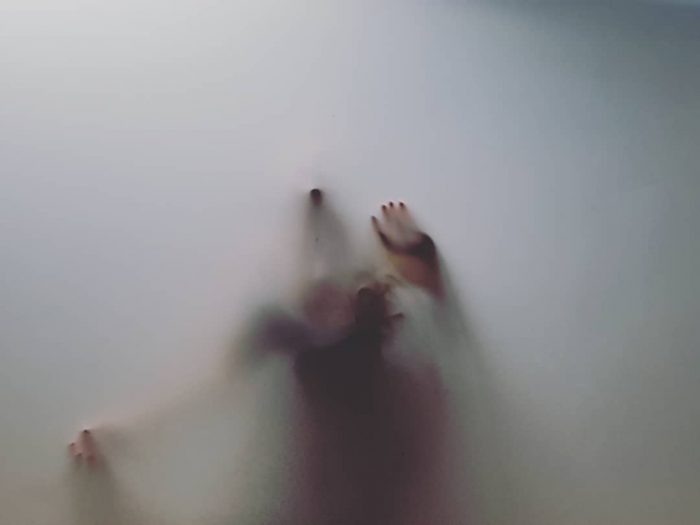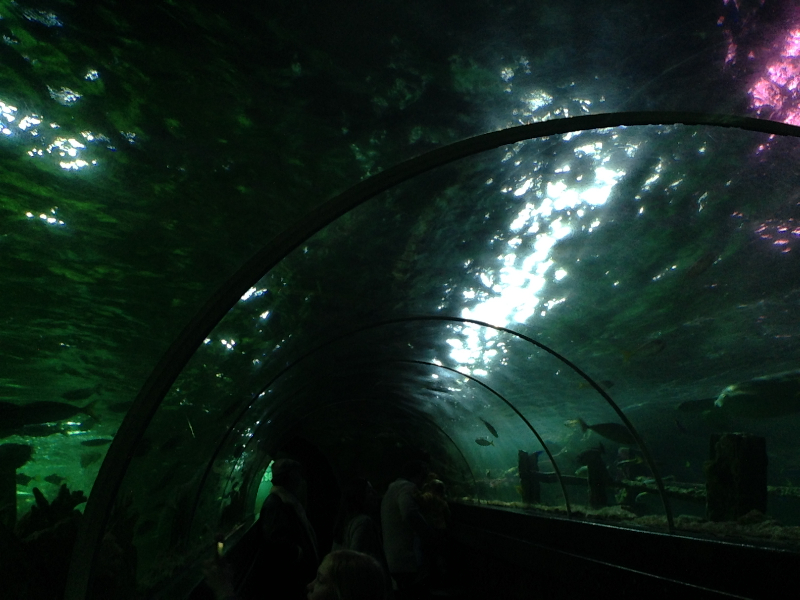The DMSA Graduate show has been offering to audiences a mix of engaging, thought provoking and aesthetically diverse experiences. Works from our students have received prestigious awards for their outstanding quality. The Graduate Show is also a chance for our students to curate, coordinate, build and promote their show, to work as a team and show the world that they are ready to enter a competitive and difficult field. Moving beyond the traditional career paths often associated with digital music production and sound arts, our students engage with the social aspects of sound and how sound can prompt us to thing of wider issues and questions.
Have you ever wondered what the sound of The Cloud is? What is our place within the digital divide, what happens to our voices when uploaded to the cloud? PJ Davy’s Heads in the Cloud is a 13.1 multi-channel, sound and light installation concerning the digitisation of our lives through the internet. Recordings of social media, blog, and website posts, vocalised by the original, online-authors, move throughout the installation; transforming into intense, digital noise as they navigate through a central, audio-visual matrix. Caged LED lights and a central 360° loudspeaker act as a physical manifestation of the internet, presenting an audible, visual focal point for the encounterer. Heads in The Cloud presents a physical, human experience to reflect on our relationship with technology and each other, in an increasingly digitised world.
Ivan Arbiol Camp’s The Return of the Forgotten is a generative sculpture of refused electronics arising from a rejection to claim a space in modern society. Sounds come from the interaction between functional and dysfunctional devices interfering with each other as a form of conversation between necessity and ecology. The piece asks the question about the use and abuse of technology and the impact of these habits on the environment.
Liam Eshghi-Luck’s The Cacophonic Hospital is an Audio-Visual composition containing imagery and sound from different spaces within hospitals throughout London, Surrey and the South-west of England. Outside of just field recording the piece incorporates foley work from research of patient and staff experiences whilst also utilising a custom software made within Max/Msp, that determines the output of alarm sound throughout the latter of this composition. The aim of this composition is to embark the audience on a journey across hospitals throughout England, in the more densely populated and the not so populated Hospitals. The idea being that noise in the hospital persists whether busy or not, and much can be done to change health care design sonically for the sake of patient and staff satisfactory.
Chrstopher Brindle’s Dying Imperfections uses a custom made low power radio transmitter tool kit to create a series of site-specific radio graffitis recorded onto cassette tape. The piece explores the imperfections in how we capture sound and the effects on our perception of the sound when the flaws in the mediums are pushed to extremes. These circuit elements in the toolkit change and mutate the sound as it iterates through the circuit multiple times, with the tape loop echo, the sounds changing pitch and levels of distortion ultimately removing familiar sounds from the context we know them, in and creating new sonic landscapes.
Jasmyn Bloch’s Femporis is an exploration into the concepts of rebirth and new life; considering the constant state of flux and growth we experience throughout our lives. It is a consideration of the notion that something peaceful can then turn traumatic, to then become something new, like birth but also like life. The ebb and flow of ups and downs, yet one cannot exist without the other. The piece prompts the audience to feel as though they have just experienced a ‘change’; a shift in thought or person; to think more about the deeper roots within themselves, and remind them of the constant changes and ‘births’ they have experienced throughout their lives, whether they are small or considerable changes.

Michael McKeown’s Aquarium Music is an electroacoustic installation that has taken place in the Brighton Sea Life Centre in May 2018. The installation featured six pieces composed entirely of naturally sourced sounds that reflect the sonic environments of the marine life in the aquarium. Some of the sounds within the compositions were manipulated by the movement within certain enclosures, making the audio content unique to each section of the centre.Aquarium Music‘s immersive soundscape sets up a process for educating the audience and of creating a more authentic and appropriate sonic environment.The piece on display in Room 229 in Grand Parade brings the six compositions in one small room, blending them together as one environment, re-constructing the atmosphere of the aquarium for the listener.
PROGRAMME
Performance Studio:
Private view: 1st June
Aki Purser / Jeph Vanger (1800 changeover)
2nd – 3rd June:
Jeph Vanger // Sφera
4th June:
DMSA Day / Alvaro Villar-Castillo // SONORAMA
5th June:
Alvaro Villar-Castillo // SONORAMA
6th – 8th June:
JORDAN LEWIS // THE N0VA GATHERING
9th – 10th June
Aki Purser // 記憶 (MEMORY)
Sound Diffusion Lab:
1st – 3rd June:
Oli Johns // The Miraculous Land – Library
4th – 5th June:
Edward Scott // Lissajous Sounds
PJ Davy // Heads in The Cloud
6th June:
Liam Eshgi-Luck // The Cacophonic Hospital
7th – 8th June:
Edward Scott // Lissajous Sounds
8th – 10th June:
PJ Davy // Heads in The Cloud
Ongoing Installations
Room 229
Oskar Jeff // Reconstructing Tapes
Sophie Kiarie // Soul
Liam Eshgi-Luck // The Cacophonic Hospital
Michael McKeown // Aquarium Music
Bobbie Cook // Hard Shoulder
Room 228
Jasmyn Bloch // FEMPORIS
The Shower room
Ivan Arbiol Camps // The Return of the Unwanted
Sound Diffusion Lab Foyer
Jack Lister // Flood the Box




